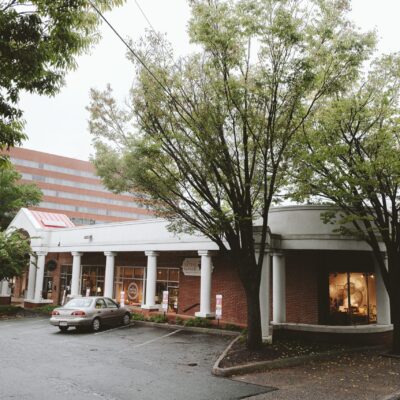|
BULLETIN BOARD Here’s your climate change: The United States Department of Agriculture has updated its map of plant hardiness zones to reflect the fact that temperatures across the country are now, on average, five degrees warmer. View the new map at planthardiness.ars.usda.gov. Wood if you could: Got a bright idea involving wood heat? The Alliance for Green Heat and Popular Mechanics magazine are sponsoring the Next Generation Wood Stove Design Challenge, looking for innovative, affordable, efficient stove designs. Finalists will take part in a 2013 Wood Stove Decathlon on the National Mall in D.C.; first prize is $25,000 and coverage in Popular Mechanics. Open your mouth: Public input is sought on March 15—first by the Department of Environmental Quality, which is forming a clean-up plan for local streams (6pm at CitySpace; call (540) 574-7870); and second on the Virginia Outdoors Plan, which covers recreational waterways and trails (3pm and 7pm at the Thomas Jefferson Planning District Commission; call (804) 786-2292).
|
With the presidential race once again focused on every issue other than the environment—which, to my mind, is kind of like arguing about a card game on the sinking Titanic, or fiddling while Rome burns—it’s good to be reminded that some people are in fact working hard for the health of the planet.
Contributor Tom Cormons, who writes for this section about his work with Appalachian Voices, e-mailed to tell me that he was busy fighting a bill in the Virginia General Assembly that would make it easier for coal companies to dump toxic waste in empty underground mines, whether or not surface landowners objected. (The bill has passed the Senate and will now go back to the House.)
Meanwhile, the Southern Environmental Law Center is waving the flag for energy efficiency, speaking on behalf of Appalachian Voices and a bunch of other groups before the State Corporation Commission. The SCC is hearing evidence about efficiency programs proposed by Dominion Virginia Power, and green groups are hoping for those programs to win approval. Local SELC attorneys Cale Jaffe and Jill Tauber are arguing the case, while another Charlottesvillian—LEAP director Cynthia Adams, who also contributes to this page—added her testimony alongside that of several local contractors.
So there’s a strong Charlottesville contingent in Richmond, staying on top of the legislative matters that can materially affect our environment. Think of them as your lifeboat, or maybe as Roman firefighters. They deserve our thanks.—Erika Howsare
|
Protesters gather outside the Richmond headquarters of Virginia Dominion Power on March 9. Though the occasion was the anniversary of Japan’s Fukushima nuclear disaster, the group focused its concern on a more local issue—the restarting of Dominion’s North Anna Nuclear Plant after the earthquake of August 23, 2011. Protesters say that safety inspections after the quake were inadequate, and that groundwater tests around the plant last month showed high levels of radioactive tritium, possibly indicating leaks. (Photo by Ash Daniel) |
Changing the flow
Joining the ever-growing list of environmentally active groups striving for a greener Charlottesville will soon be the Living Technology Institute. This young organization hopes to work alongside existing groups to raise local awareness around “the big issues of water,” says Will Kirksey, executive director.
The LTI’s mission is to promote “ecological technologies” and a decentralized water system that depends on ideas like rainwater harvesting, rain gardens, and engineered wetland wastewater reuse. Kirksey explains that we can use technology to create urban systems that draw from natural processes, a concept known as “eco-mimicry.” The institute aims to combine an understanding of large-scale ecosystems with 21st century technology and engineering, integrating human life and natural ecosystems.
American cities have already begun to develop these systems, according to Kirksey. Philadelphia, for example, has struggled with sewer overflow, but “eco-mimicry” thinking has allowed the city to develop a plan to capture rainwater and use it locally. Kirksey says that the city has established rain gardens, reconstructed buildings to slow down the accumulation of storm water, and has even begun creating parking lots out of permeable materials.
To introduce these ideas to Charlottesville, the LTI will host a forum in conjunction with the UN’s internationally celebrated World Water Day. On Thursday, March 22, big-name environmental leaders will speak about global and local water issues at McGuffey Art Center, starting at 1:30pm.
Among the speakers will be Jerry Yudelson, dubbed the “Godfather of Green” by Wired magazine. Yudelson has written 12 books on everything from water conservation to green homes and development, and will be discussing his recent book Dry Run: Preventing the Next Urban Water Crisis.
Other speakers will include Cynthia Barnett, author of Blue Revolution: Unmaking America’s Water Crisis, David Andrews, senior representative of Food and Water Watch, and Tara Lohan, editor of Water Matters.
Anyone can attend, but LTI hopes to attract “very senior members of the community.”
“We’d love to see elected officials, the academic community, and people who are active in a variety of issues and causes around the community,” says Kirksey.
The event is free, but with seating limited to about 100 people, Kirskey recommends that those interested sign up at livingtechnologyinstitute.org.—Laura Ingles
The history of streams
Here’s a funny thing about rivers: Because the water is always flowing, the river you see one minute is gone the next. It’s just like that old saying: You will never, ever step into the same river twice. So when I visit Ivy Creek twice a year, I have to remind myself that it’s not the same stream from a few months ago. In fact, it’s not even the same stream from five minutes ago.
I am a volunteer for StreamWatch, a nonprofit organization that monitors the health of local streams and rivers. We do this by collecting samples of the small invertebrate animals that live under the rocks at the bottom of the stream, such as mayfly and stonefly larvae, beetles, clams, and snails. Like canaries in a coal mine, the relative numbers of these little creatures act like a warning system that tells us how impaired the stream is.
This is important because we use this same water for drinking, irrigation, and recreation, and streams are constantly moving through areas that make them prone to pollution with things like sediment (from bank erosion), chemicals, fertilizer, or anything else that might find its way into the water.
One of the things I’ve learned since joining StreamWatch is that every river or stream has its own history, which may or may not include sources of pollution. For example, Ivy Creek starts in Ivy (naturally), about 10 or 11 miles west of Charlottesville. From there, it slowly gathers water from tributaries and meanders northeastward, flowing under Highways 64 and 250, cutting across farms, wandering through residential areas, glancing off a golf course, and passing beneath Garth Road (where we collect our sample) before emptying into the South Fork Rivanna Reservoir—a primary source of water for the Charlottesville area. Like Ivy Creek, each stream we monitor has a unique history, and our sample tells us how clean that stream’s past was.
So as we visit our local rivers and streams, I think it’s important to think about the water that continually runs through them: where it is coming from, what it has seen, and where it is going. And we can be thankful for the little guys—the tiny creatures that call the water their home—for letting us know if the stream needs our help to keep it clean.—Rob Tilghman
/dmp00.jpg)





